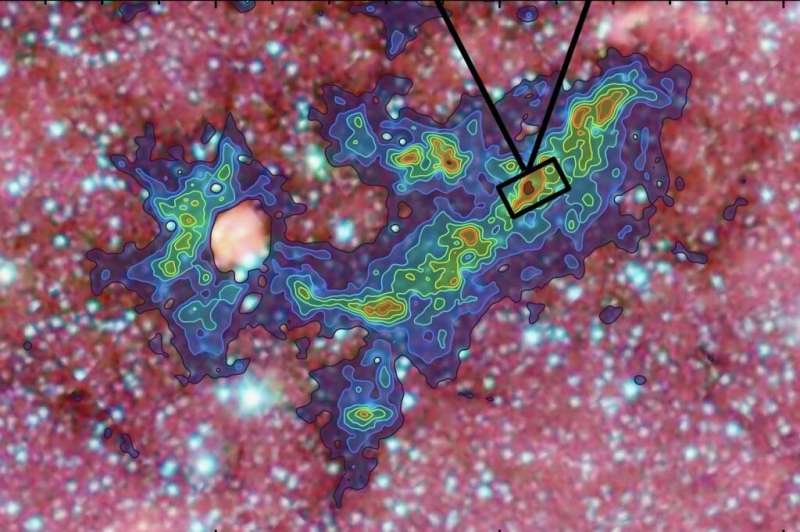This article has been reviewed according to Science X's editorial process and policies. Editors have highlighted the following attributes while ensuring the content's credibility:
fact-checked
preprint
trusted source
proofread
Astronomers peer inside the 'Dragon Cloud'

How did the most massive stars form? Astronomers have debated their origins for decades. One of the biggest problems facing these theories is the lack of observations. Massive stars are relatively rare, and so it's hard to catch them in the act of formation. But new observations of the so-called Dragon cloud may hold the clue to answering this mystery.
A team of astronomers used the ALMA telescope in the Atacama desert of Northern Chile to study the Dragon cloud, a dense cloud of molecular hydrogen that serves as the site of star formation throughout its complex. The astronomers specifically were looking for dust, which in addition to the gas that makes up the bulk of the complex collapses to form stars.
The astronomers found several regions of active star formation, but also a strange dense clump lacking any newborn stars at all. Upon further investigation the team discovered that the central clump was actually composed of two separate regions. One of the regions contained over 30 solar masses worth of material, while the other contained just two solar masses worth of material.
According to their observations those clumps were very dense and actively collapsing, implying that those clumps were going to soon start forming stars.
Most importantly, the astronomers found that the clumps themselves were not appearing to fragment into smaller clumps as they collapsed. This leads credence to the "core accretion" model of star formation. In this model, the most massive stars collapse from single units of gas clouds and start their lives already with incredibly high masses. The observations support this idea because for the first time we have been able to observe a giant cloud of gas undergoing direct collapse without splitting apart.
The astronomers have called for more detailed observations of the complex to further untangle the mystery of the formation of massive stars. Their findings are published on the arXiv preprint server.
More information: A. T. Barnes et al, Mother of Dragons: A Massive, quiescent core in the dragon cloud (IRDC G028.37+00.07), arXiv (2023). DOI: 10.48550/arxiv.2303.15499
Journal information: arXiv
Provided by Universe Today



















